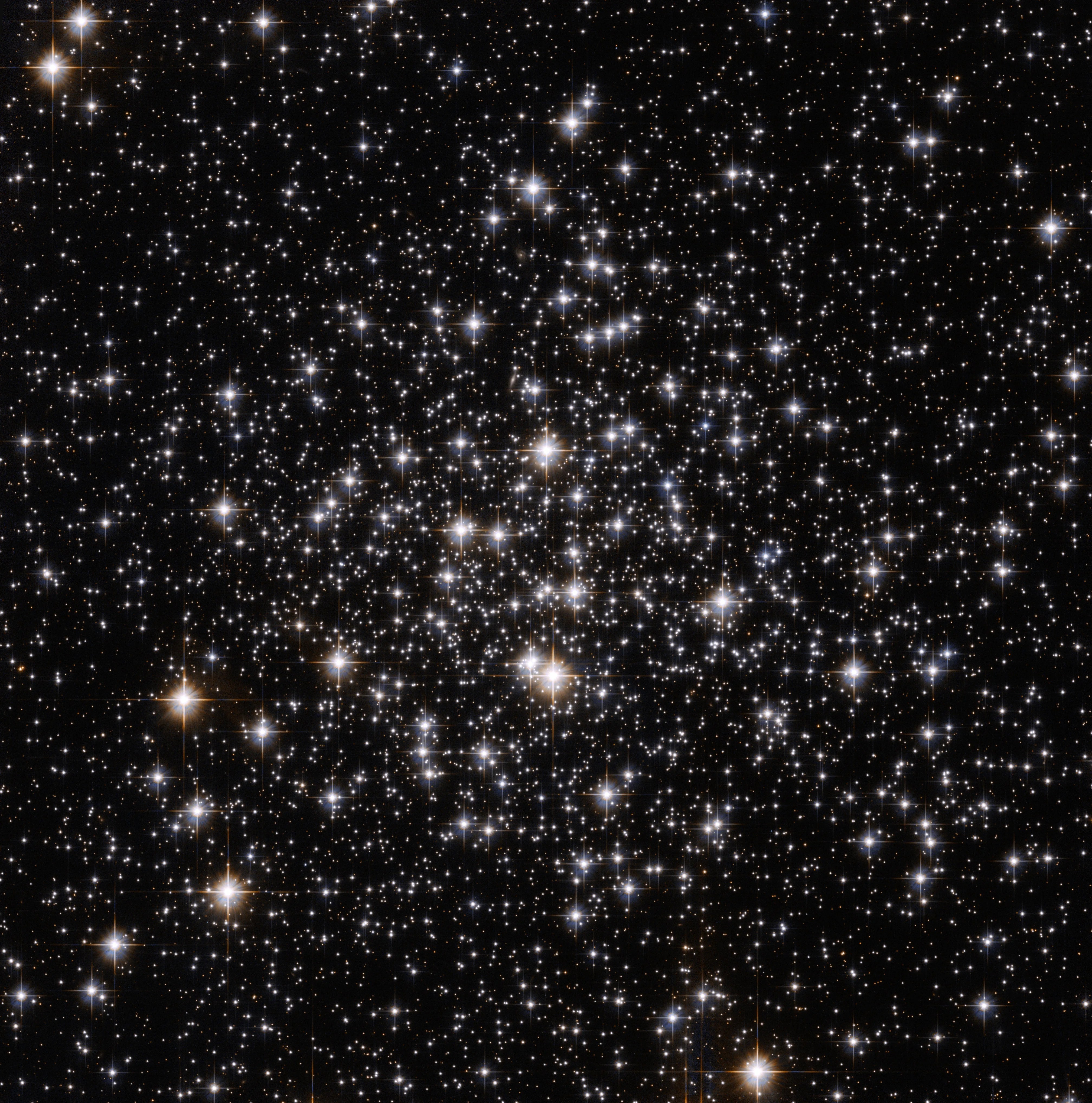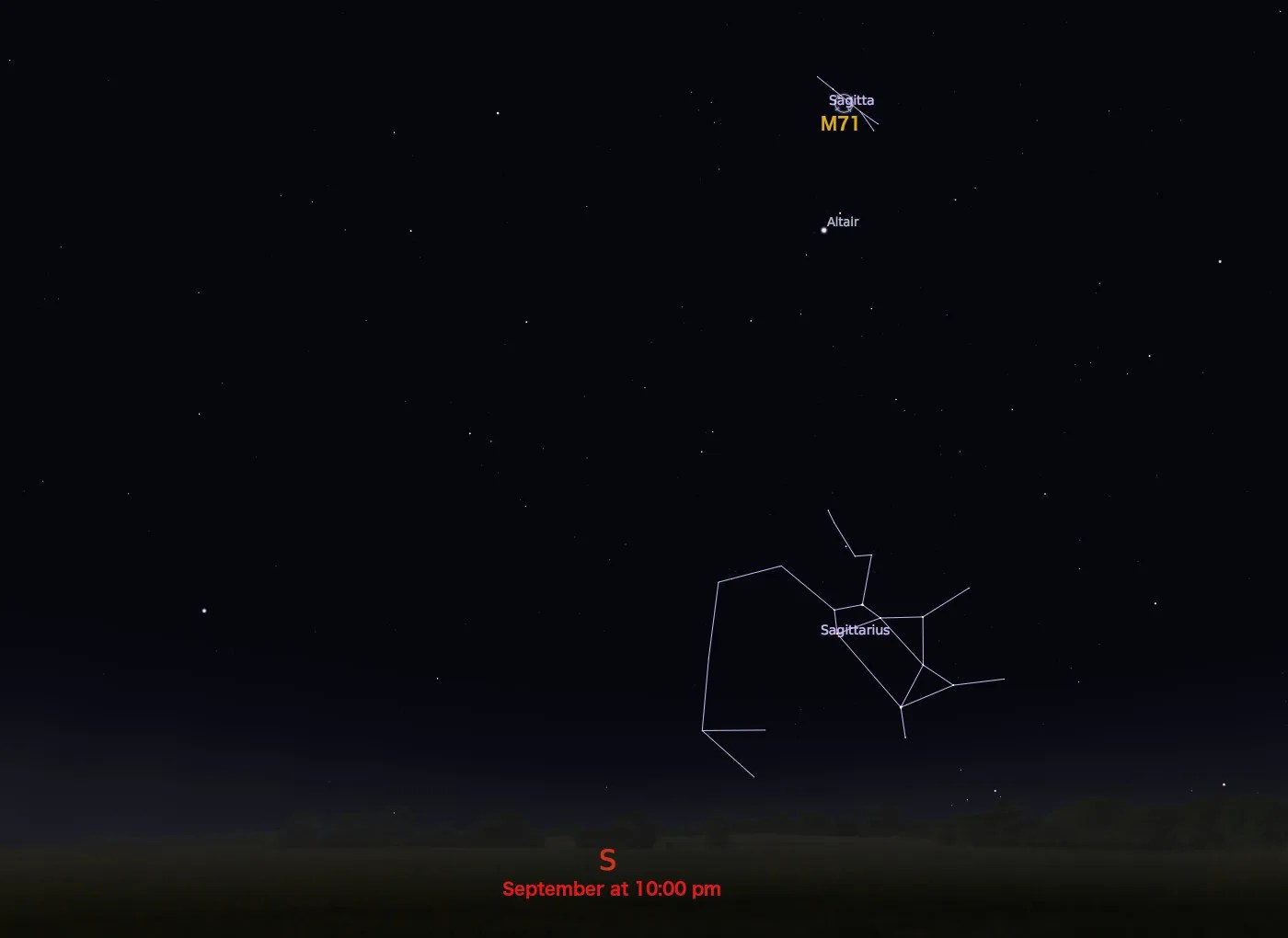Messier 71
This globular cluster is one of the smallest of its kind.
Distance
13,000 light-years
Apparent Magnitude
6.1
constellation
Sagitta
object type
Globular Cluster

Ever since it was discovered in 1746 by the Swiss astronomer Jean-Philippe Loys de Chéseaux, the nature of M71 has been the subject of some questioning. Over the centuries, it has been classified as both an abnormally dense open star cluster and as an unusually loose globular cluster.
Because M71 does not seem to have a high concentration of stars at its center, and because the elemental composition of the stars it contains suggests that they are younger than most globular clusters, M71 was initially believed to be an open cluster. In the 1970s, astronomers examined the relationship between the brightnesses and temperatures of the stars in the cluster. They found a characteristic trend among the stellar population that is unique to globular clusters, so M71 was reclassified as a young, loosely concentrated globular cluster — one of the smallest of its kind.
This Hubble image of M71 is a composite of observations at visible and infrared wavelengths of light. M71 is located roughly 13,000 light-years from Earth in the constellation Sagitta. It has an apparent magnitude of 6.1 and appears as a faint patch of light with a pair of binoculars. The cluster is best observed during September.
For more information about Hubble’s observations of M71, see:

Explore Hubble's Messier Catalog
The following pages contain some of Hubble’s best images of Messier objects.

Messier 1 (The Crab Nebula)
Better known as the Crab Nebula, Charles Messier originally mistook Messier 1 for Halley’s Comet, which inspired him to create…

Messier 2
Hubble's image of Messier 2 is comprised of visible and infrared wavelengths of light.

Messier 3
Messier 3 holds more than 500,000 stars.




